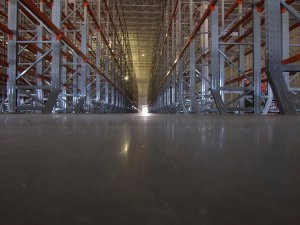Understanding F-Numbers for Super Flat Floors
When it comes to concrete slab construction, F-Numbers are the metric for quality. They consist of the concrete floor flatness (FF) and floor levelness (FL). To pour concrete properly, you have to have a good understanding of what these numbers mean because they can improve the quality of your jobs. This is why the American Concrete Institute requires F-number measurements to be taken within 72 hours of slab installation.
Understanding F-numbers can be difficult because they aren’t a simple measurement, like the dimensions of a wooden structure. F-numbers are created from several measurements and then run through a formula that calculates the number. Because it is a complicated and tedious procedure, devices like the Dipstick Floor Profiler have been approved by the ASTM for F-number measurement.
 Let’s start off with the basics:
Let’s start off with the basics:
Floor Flatness (FF): The FF number essentially tells you how flat your concrete floor is. Bumps and grooves cause your Floor Flatness numbers to drop. Higher F-numbers equal flatter floors.
Floor Levelness (FL): The FL number indicates if you have any tilts or pitches in the slab. The more level your slab, the higher your number.
These two numbers work together to control levelness and flatness. Because people often assume something flat must be level, it’s easy to see how they can become confused. A common analogy is to describe F-numbers like a wave that has both amplitude and frequency. In order to serve its purpose, the concrete floor should be both flat and level.
Elevated Slabs
While both FF and FL numbers work on standard concrete floors, elevated slabs typically only specify the FF number. This is because deflection that occurs cannot be completely controlled by a contractor. Elevated slabs can take a little bit longer to measure because of deflection. On the other hand, flatness is critical on elevated slabs. This is because so many other components rely on it. For example, if someone is finishing the space where an elevated slab was placed, they may run into problems installing door frames, partitions, cabinets, etc. if the floor isn’t level.
Superflat Floors
Superflat floors are a specification that describes the FF and FL required (F min 100) to support Very Narrow Aisle Lift Trucks. Additionally, Superflat for Random Traffic Floors, which is a rare occurrence, is often defined as FF100/FL50. This is a very high degree of flatness/levelness. In order to do this successfully, they must be precisely placed in long flat strips. This is an intricate procedure best left to the experts.
want to learn more?
This post is a basic run-down for F-numbers. You can learn more by reading our free F-Number Handbook .
